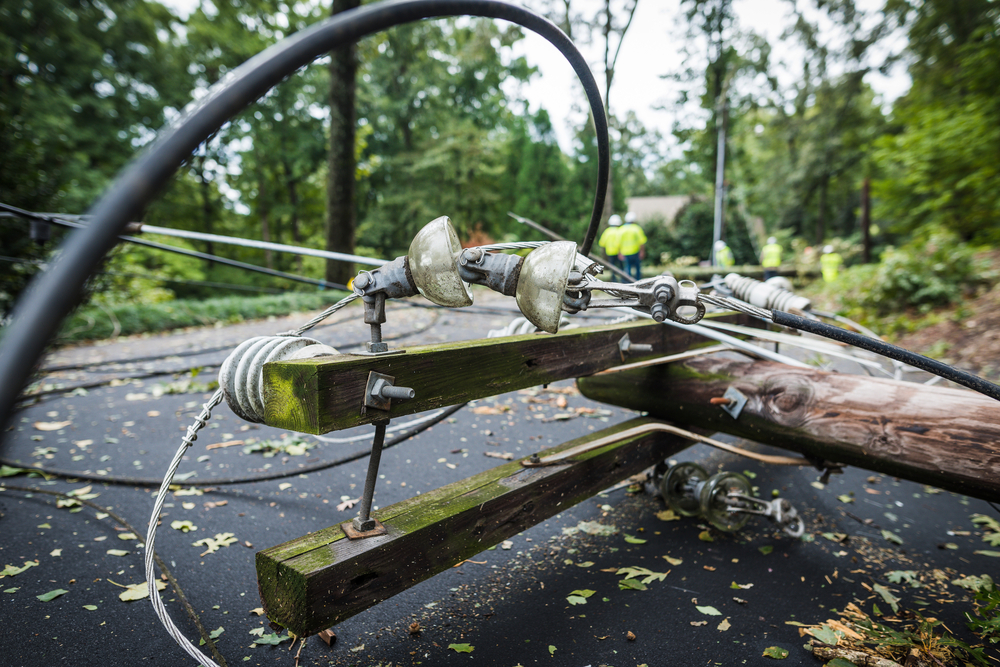A power outage can be caused by many things—bad weather, car accidents, downed trees and power lines, electricity upgrades—even possums! While we can’t always control when a power outage happens, it’s important to know what causes them. This way, you can be prepared for when the lights go out. Read on through this blog post to stay safe and informed about what causes a power outage.
Severe Weather Conditions like Cyclones, Thunderstorms and High Winds
Severe weather can cause power outages through strong winds, heavy downpours and potent thunderstorms. High winds can break tree branches and knock them onto power lines, while flooding rain can damage substations and trip circuit breakers.
Cyclones are incredibly intense and can cause severe destruction to power plant infrastructure. Furthermore, snow storms in colder climates create extra weight on power lines that can lead to fallen wires or damaged poles.
Downed Power Lines Due to Trees or Other Objects Falling on Them
Downed power lines due to objects falling on them such as trees in a heavy wind can cause serious electrical outages. When trees or other objects come in contact with power lines, not only do they disrupt the power grid, but they can also be extremely dangerous. As they are connected to high voltage, any contact with the live wires can lead to injury.
It’s important to stay well away from any downed power lines and call your local utility company immediately. Remember, electric lines may still be active even when they have been separated from poles or towers as electric arcs within the line can still remain energised.
Overloaded Circuits From Too Much Demand on the Electrical Grid
Every day, the power grids across the world work hard to keep electricity flowing in our lives. However, the demand for electricity can sometimes exceed the capacity of these grids and lead to them becoming overloaded. Overloaded circuits are a major cause when it comes to power outages.
In particular, surges of energy that arrive suddenly can damage components within the grid and cause them to fail—leading to disruption in power supply.
It is important to remember that even without an overload, any part of an electric grid can fail at any time. However, overloaded circuits simply increase this risk further and lead to a higher chance of power outages occurring.
Equipment Failures at Power Plants or Other Substations
A power outage can occur when equipment fails at a power plant or other substation. These types of failures, known as distribution system outages, can affect small, localised areas, or even large parts of a city depending on the severity and location of the malfunction.
Equipment failure is often caused by age, extreme weather conditions, decay from elements such as saltwater or wildfire, animal interference with structures and components, improper maintenance or installation of components, theft-related damage to equipment, or even lightning strikes.
Thankfully, many utilities develop maintenance strategies to regularly inspect and repair any damaged equipment to ensure they are compliant with safety standards and minimise the risk of unexpected outages due to equipment failure.
Damage Through Excavation Work
If excavation damages or breaks underground cables, this can result in an immediate loss of power to an area. Likewise, if excavation disrupts the ground around existing electrical infrastructure (such as poles or transformers), it can cause instability and eventual failure. Heavy machinery operating close to existing electrical infrastructure can also cause vibrations and electromagnetic interference which can disrupt the power grid.
These scenarios require careful management by construction teams to ensure safety is maintained and the risk of a power outage is minimised
Maintenance or Upgrades to the Electricity Network
Maintenance and upgrades to the electricity network can, in some cases, cause power outages. Depending on the type of work being carried out and its impacts on the network, this could range from short-term localised outages to longer-term regional outages. Upgrading an old substation, for example, may require a longer outage than replacing overhead power lines.
Electricity network owners do their best to minimise disruption by performing the work overnight—or using backup power systems where possible. Customers should also be advised ahead of time if an outage is expected, how long it might last and what steps can be taken to reduce the impact.
Power outages can be caused by a variety of things—from weather conditions to equipment failures and human error. While we may not be able to control all of the factors that lead to a power outage, knowing what causes them can help us be better prepared when they do happen.
Do you have a plan in place for how to deal with a power outage? Share your tips in the comments below! If you need assistance during a power outage, get in touch with Oceanside Services today on (07) 5520 7100.



 5 Star Service
5 Star Service 




